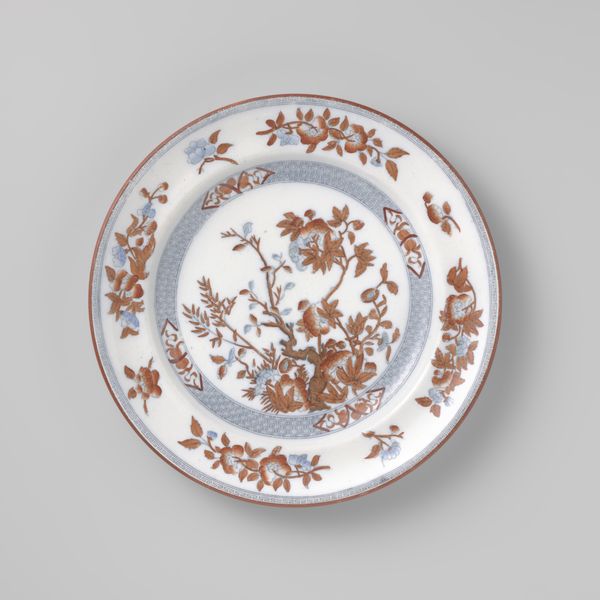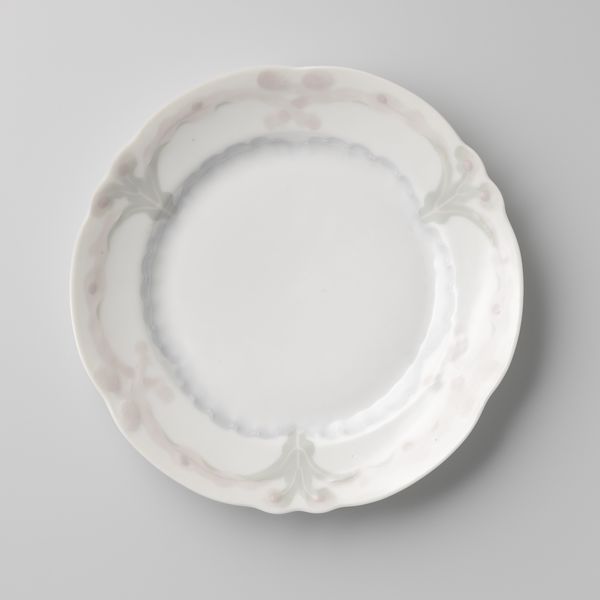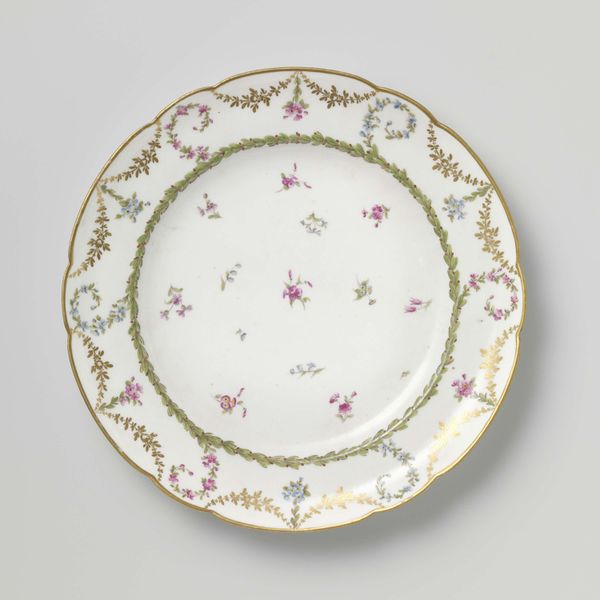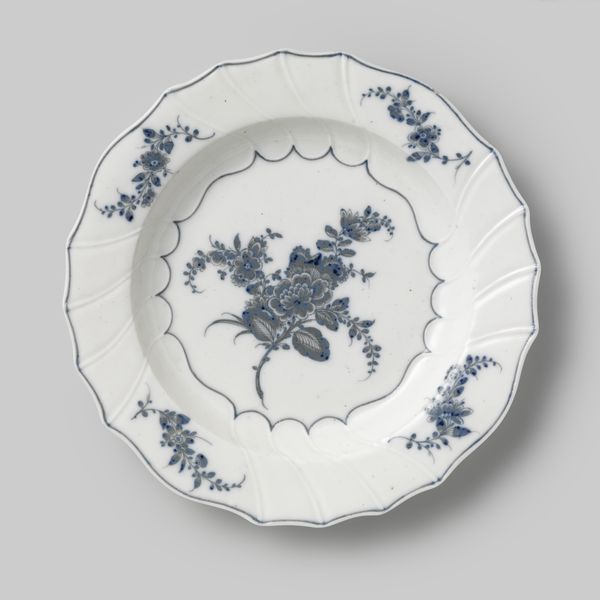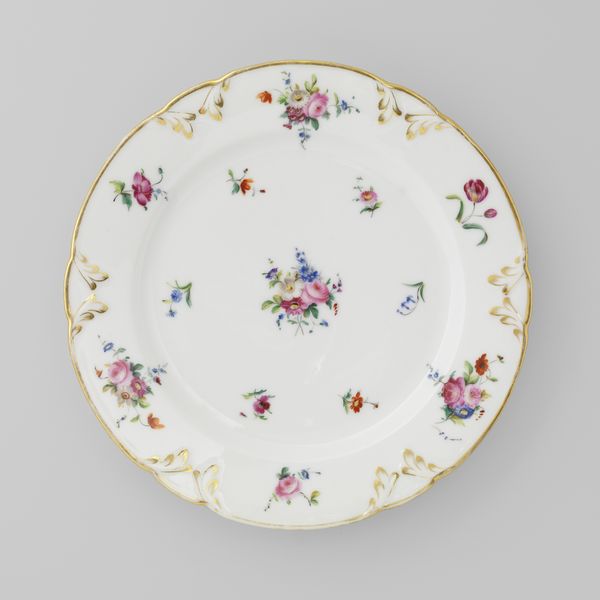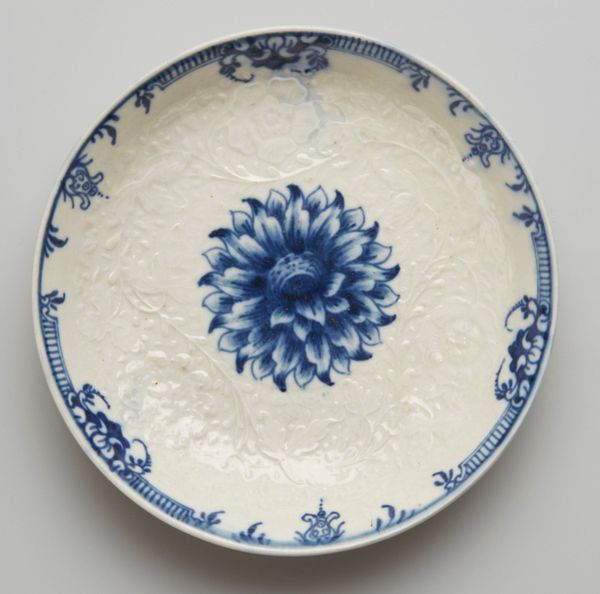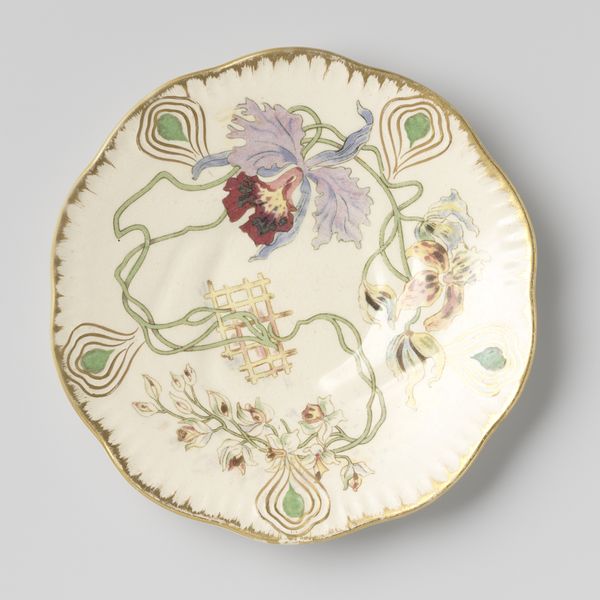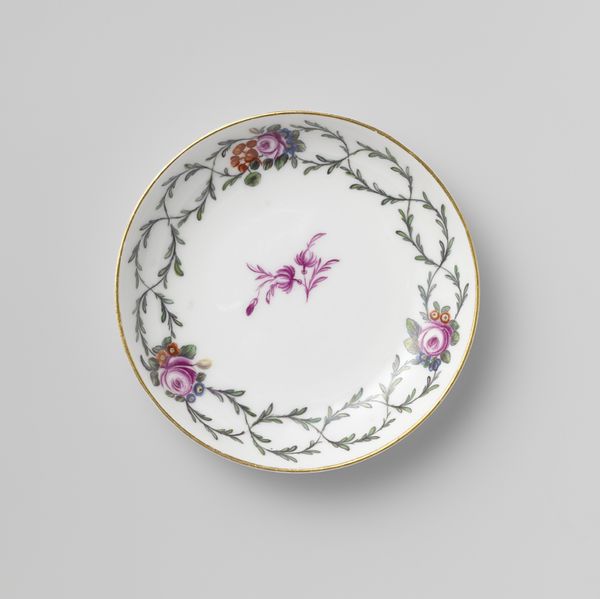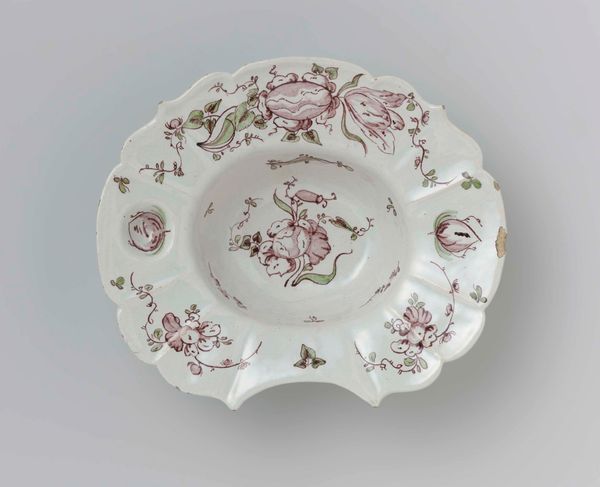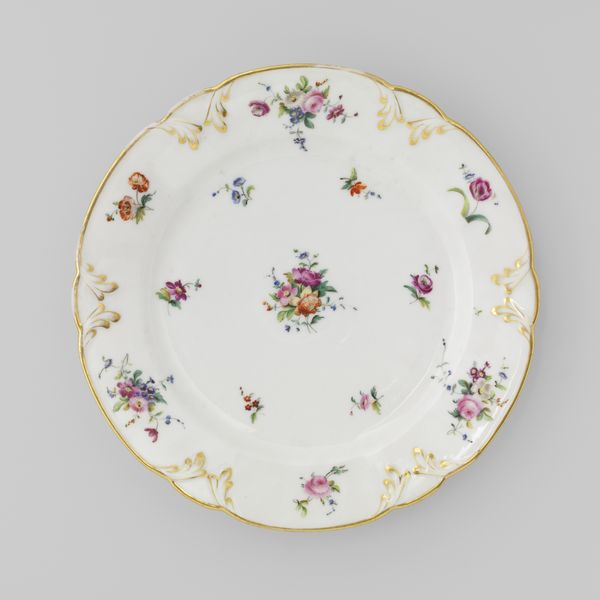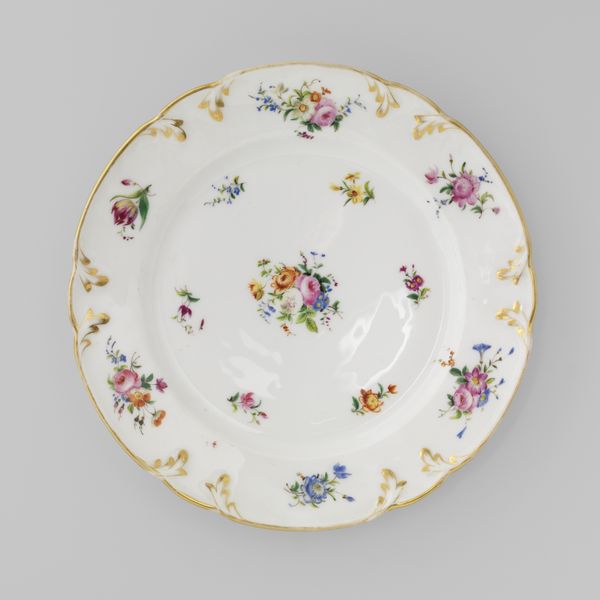
painting, ceramic, earthenware
#
painting
#
ceramic
#
earthenware
#
stoneware
#
ceramic
#
decorative-art
Dimensions: height 2 cm, diameter 14 cm
Copyright: Rijks Museum: Open Domain
This plate was painted in sepia by Johannes Hilverdink, a Dutch artist who was active in the 19th century. The sepia technique, using a brownish pigment derived from squid ink, gives it a distinctive, antique appearance. But what does this sepia technique tell us about the social context of art production in the Netherlands during that time? The floral motif and the central image may seem merely decorative. Yet, in the 19th century, the rise of industrialization led to the mass production of ceramics. So, the handmade quality of this plate reflects a conscious choice to preserve traditional craftsmanship. It speaks to the Arts and Crafts movement's broader concerns about the alienating effects of industrial labor. To understand it better, we might consider the influence of Dutch art schools and the role of museums in shaping artistic taste. By examining the institutional history and the social conditions of its creation, we can better appreciate the cultural value that was attached to this plate.
Comments
No comments
Be the first to comment and join the conversation on the ultimate creative platform.

